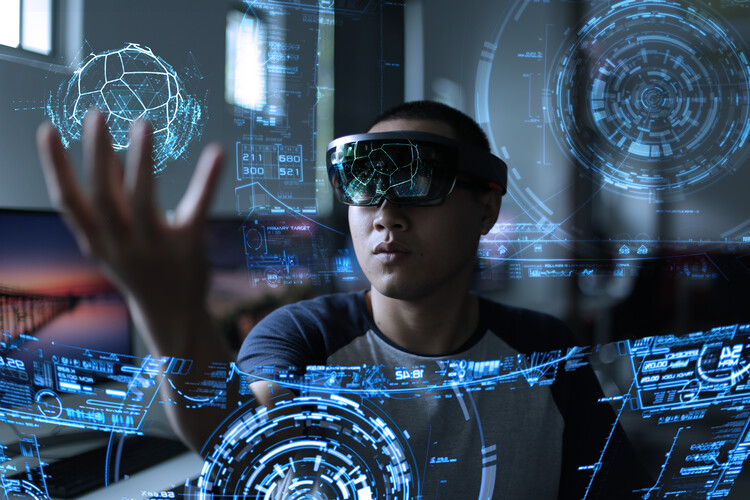Hey parents have you know that Virtual Reality and Augmented Reality are revolutionizing and how its interact with the world. These technologies offer immersive experiences that blend the physical and digital realms. From innovative educational apps and platforms to exciting experiments VR and AR are transforming education and entertainment alike. In this article, we will explore virtual reality and augmented reality examples, their applications, and the differences between them.
Virtual Reality and Augmented Reality History:
The history of VR and AR dates back to the mid-20th century. Early developments like the Sensorama and the Sword of Damocles laid the groundwork for modern VR and AR technologies. Over the decades, advances in computing power, graphics, and display technologies have driven the evolution of VR and AR, making them more accessible and practical.
What is Virtual Reality and Augmented Reality?
Virtual Reality (VR) immerses users in a completely digital environment, often using headsets like the Oculus Rift or HTC Vive. Users are transported into a 3D world where they can interact with the environment and objects. VR is commonly used in gaming, simulations, and training programs.
Augmented Reality (AR) overlays digital information onto the real world, using devices like smartphones or AR glasses. AR enhances the user’s view of the real world with additional data, graphics, or animations. Examples include AR apps for navigation, gaming, and retail.

Virtual Reality and Augmented Reality Examples:
Virtual Reality Examples:
- Gaming: Games like Beat Saber and Half-Life: Alyx provide immersive gameplay, allowing players to experience virtual worlds in first-person.
- Education: VR can simulate historical events or scientific processes for interactive learning, making subjects more engaging and easier to understand.
- Healthcare: VR is used for surgical training, therapeutic treatments for phobias, and rehabilitation exercises.
Augmented Reality Examples:
- Gaming: Pokémon GO uses AR to bring virtual creatures into the real world, blending gaming with real-world exploration.
- Retail: Apps like IKEA Place allow users to visualize how furniture will look in their homes by overlaying 3D models onto real-world views.
- Navigation: AR apps provide real-time directions and information overlays, making navigation more intuitive and informative.
Difference Between Augmented Reality and Virtual Reality:
The key difference lies in the user’s experience. VR creates a completely digital environment, disconnecting users from the physical world. AR enhances the real world with digital overlays, maintaining the connection to the physical surroundings.

Virtual Reality and Augmented Reality in Education:
Both VR and AR are transforming education by making learning more engaging and interactive. Virtual Reality in education allows students to explore virtual field trips and simulations, enhancing understanding and retention. For example, students can take a virtual tour of ancient Rome or perform virtual chemistry experiments.
Augmented Reality in education brings textbooks to life with 3D models and interactive content. Students can scan textbook pages with an AR app to see 3D models of molecules, historical artifacts, or even interactive quizzes.

Virtual Reality and Augmented Reality Applications:
These technologies have diverse applications across various industries:
- Healthcare: VR for surgery simulations allows doctors to practice complex procedures, while AR assists surgeons by overlaying vital information during real surgeries.
- Real Estate: VR tours of properties let potential buyers explore homes remotely, and AR helps visualize interior design changes.
- Entertainment: VR gaming provides fully immersive experiences, and AR enhances live events with interactive elements.
Advantages and Disadvantages of Virtual Reality and Augmented Reality:
Advantages:
- Immersive Learning: Enhanced educational experiences that can make learning more engaging and effective.
- Improved Training: Safe environments for complex training, such as flight simulators or medical procedures.
- Increased Engagement: Interactive and engaging content that captivates users.
Disadvantages:
- Cost: High-end VR and AR devices can be expensive, limiting accessibility.
- Accessibility: Requires specific hardware and software, which may not be widely available.
- Health Concerns: Prolonged use can cause eye strain, motion sickness, and discomfort.
Virtual Reality and Augmented Reality in Artificial Intelligence:
AI plays a crucial role in enhancing VR and AR experiences. AI algorithms can optimize virtual environments, provide intelligent interactions, and improve user experiences. For example, AI can create more realistic virtual characters, improve object recognition in AR applications, and enhance the realism of VR simulations.
Virtual Reality and Augmented Reality Companies:
Several companies are leading the VR and AR revolution:
- Oculus: Known for their VR headsets, Oculus has pioneered consumer VR experiences.
- Magic Leap: Pioneers in AR technology, Magic Leap offers AR devices that blend digital and real-world experiences.
- Sony: Major player with PlayStation VR, offering a wide range of VR games and experiences.
Virtual Reality and Augmented Reality in Computer Graphics:
VR and AR heavily rely on advanced computer graphics to create realistic and interactive environments. High-quality graphics enhance the immersion and usability of these technologies. Techniques like 3D modeling, texture mapping, and real-time rendering are essential for creating convincing VR and AR experiences.
Virtual Reality and Augmented Reality Jobs:
The rise of VR and AR has created numerous job opportunities. Careers in VR and AR include software development, graphic design, and hardware engineering. Other roles include content creation, user experience design, and project management. As these technologies continue to grow, the demand for skilled professionals in VR and AR is expected to increase.
Virtual and Augmented Reality on Mobile:
Mobile devices have made VR and AR accessible to a broader audience. Apps like Google Cardboard and ARKit enable users to experience VR and AR using their smartphones. These mobile platforms offer a more affordable entry point into VR and AR, allowing users to explore basic applications and experiences.
Virtual Reality and Augmented Reality Projects:
Innovative VR and AR projects are continually emerging, showcasing the potential of these technologies. Examples include VR therapy programs for PTSD, AR navigation aids for visually impaired individuals, and VR training simulations for astronauts. These projects demonstrate the diverse applications and transformative potential of VR and AR.
Virtual Reality and Augmented Reality Technology:
The technology behind VR and AR is constantly evolving. Advances in hardware, such as lighter and more comfortable headsets, and software, like more intuitive user interfaces, are making these experiences more immersive and accessible. New developments in haptic feedback, spatial audio, and eye-tracking are also enhancing the realism and interactivity of VR and AR.
Virtual Reality and Augmented Reality Uses:
The uses of VR and AR are vast and varied, spanning industries such as healthcare, education, real estate, and entertainment. These technologies are transforming how we learn, work, and play. From immersive educational experiences to enhanced navigation and real estate visualization, VR and AR are opening up new possibilities and changing the way we interact with the world.
Conclusion:
Virtual Reality (VR) and Augmented Reality (AR) are transforming how we interact with the world around us. From immersive gaming and educational experiences to revolutionary applications in healthcare and real estate, the uses of VR and AR are vast and varied. Understanding the differences between these technologies, their advantages, and their practical applications can help you appreciate their potential and impact.
As VR and AR continue to evolve, they promise to bring even more exciting developments and opportunities. Just like simple machines revolutionized human labor, VR and AR are set to revolutionize our digital interactions. Embrace the future with VR and AR and explore the endless possibilities they offer!
FAQS:
1.What is Augmented Reality and Virtual Reality?
Augmented Reality (AR) overlays digital information onto the real world, enhancing the user’s environment with virtual elements through devices like smartphones or AR glasses. Virtual Reality (VR) creates a completely immersive digital environment that replaces the real world, experienced through VR headsets. AR adds to reality, while VR creates a new, separate reality.
2.What is the difference between virtual reality and augmented reality?
Virtual Reality (VR) completely immerses users in a digital environment, replacing the real world, while Augmented Reality (AR) overlays digital information on the real world, enhancing the user’s surroundings without replacing them. VR requires specialized headsets, whereas AR can be experienced through smartphones or AR glasses.
3. What is AR and VR in AI?
AR (Augmented Reality) and VR (Virtual Reality) in AI (Artificial Intelligence) refer to the integration of AI technologies to enhance user experiences. AI can improve VR by creating more realistic and interactive virtual environments, while in AR, AI can enhance object recognition, interaction, and provide real-time contextual information to users.
4. What do you mean by virtual reality?
Virtual Reality (VR) is a technology that uses headsets and sometimes additional sensors to immerse users in a completely digital, interactive environment. By simulating various sensory experiences like sight and sound, VR allows users to explore and interact with a computer-generated world as if it were real.
5. What are VR and AR articles?
VR (Virtual Reality) and AR (Augmented Reality) articles are written pieces that explore various aspects of these technologies. They can include explanations, use cases, examples, comparisons, latest advancements, and discussions on their impact on different industries, helping readers understand and stay updated on VR and AR trends.
Additional Resources:
VR/AR Association:
IEEE Virtual Reality and Augmented Reality:
Augmented Reality for Developers:
Virtual Reality for Developers:

Empowering parents to raise happy, confident kids. Get practical parenting tips and advice on our blog, Smart Parent Guides.
